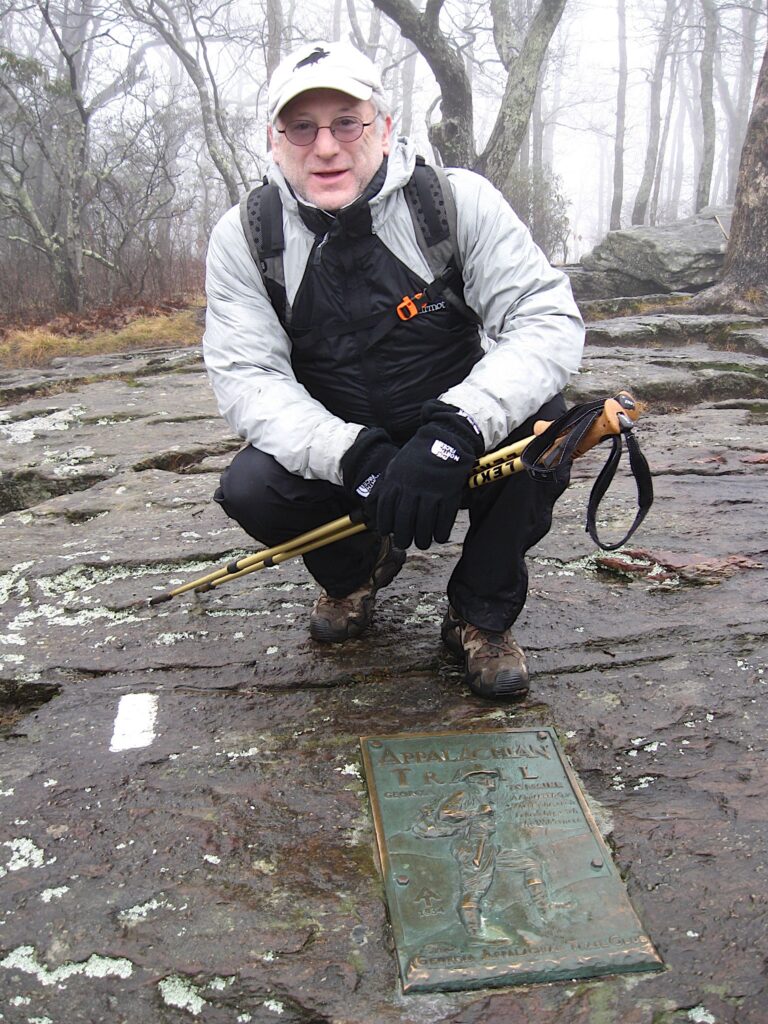the Appalachian Trail
To walk; to see and to see what you see.
Benton MacKaye said this, commenting on the ultimate purpose for hiking on the Appalachian Trail. MacKaye was an early 20th century forester, conservationist and visionary, one of his visions being the Appalachian Trail. He is the guy who dreamed it up.
I don’t know how many times I’ve written about the Appalachian Trail in these accounts, but this footpath does get my attention. Heck, the A T traverses, or nearly traverses, the high points of six states. We’ve seen this trail before.
MacKaye envisioned, as did others, a connection of the highest summit in the northeast, Mount Katahdin in Maine, with the highest summit in the southeast, Mount Mitchell in North Carolina. It took the work of thousands of volunteers and a handful of influential big shots to bring about, maintain and improve this trail, this “continuous wilderness footpath.” Who? Newspaperman Raymond Torrey, attorney Myron Avery, retired Connecticut judge Arthur Perkins, advocate Stanley A Murray, veteran Earle V Shaffer, Major William A Welch, Presidents Lyndon Johnson and Jimmy Carter.
It’s a hiking trail. It’s an extraordinarily well-maintained hiking trail, almost 2200 miles long, manicured in some places with row upon row of culverts, blazed with unmissable white or blue paint marks, thousands of them, never more than a quarter mile apart. There are architectural rock cairns and a series of the best trail guidebooks ever written.
The Appalachian Trail Conservancy is currently the overseeing agency for the Trail. Their mission is far greater than just getting folks to walk on the trail. They mention phrases like “vast natural beauty,” “priceless cultural heritage,” “connect the human spirit with nature,” “preserve the delicate majesty,” “spirit of cooperation,” “passion for excellence,” “diversity” and other inspiring concepts.
Currently the Appalachian Trail is 2189.2 miles long. In spite of this precision, the actual length varies due to reroutes, varying footpath conditions, changes in rights of way and other factors. Mount Katahdin in Maine was chosen for the northern terminus of the trail, and there couldn’t be a prettier place. The original southern terminus was chosen at the summit of Mount Oglethorpe in Georgia, the southernmost peak in the Blue Ridge Mountains. In 1958 however, this terminus was moved to Springer Mountain, just to the northeast of Oglethorpe.
Let’s say you have decided to hike the Appalachian Trail, south to north. That’s a long schlepp, but just the prescription for returning soldier Earle V Shaffer who, in 1948, needed to “walk off the war.” Walking, or traveling by shank’s mare, as we might say, has a lot of magic in it. Mr Shaffer was the first person to hike the entire trail in one continuous trip.

